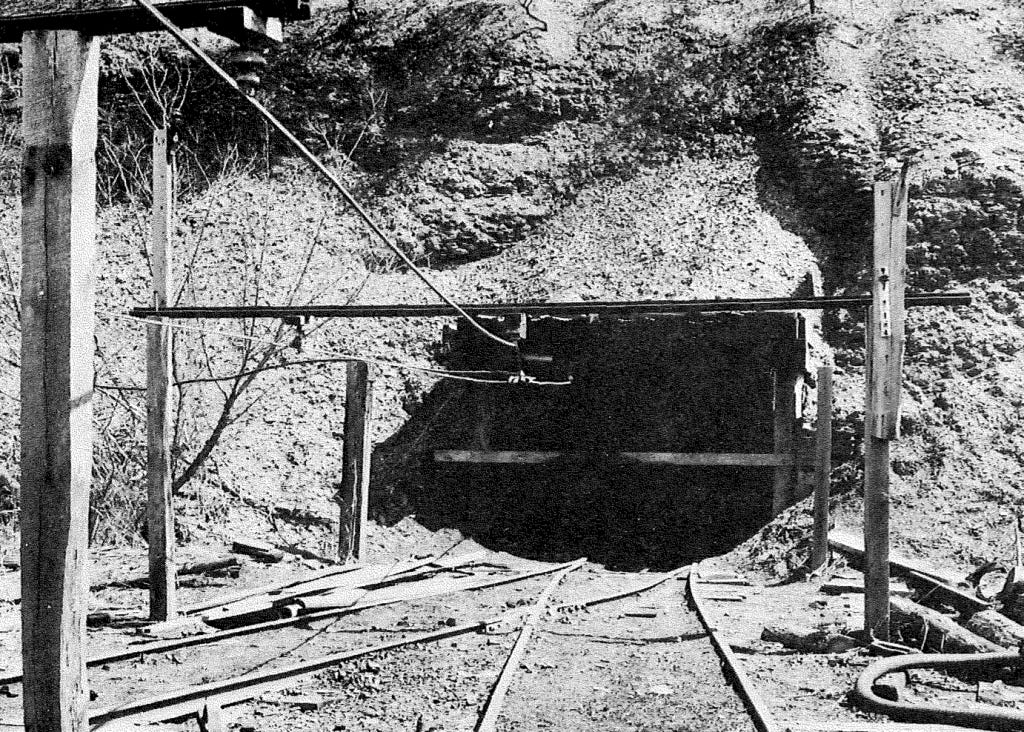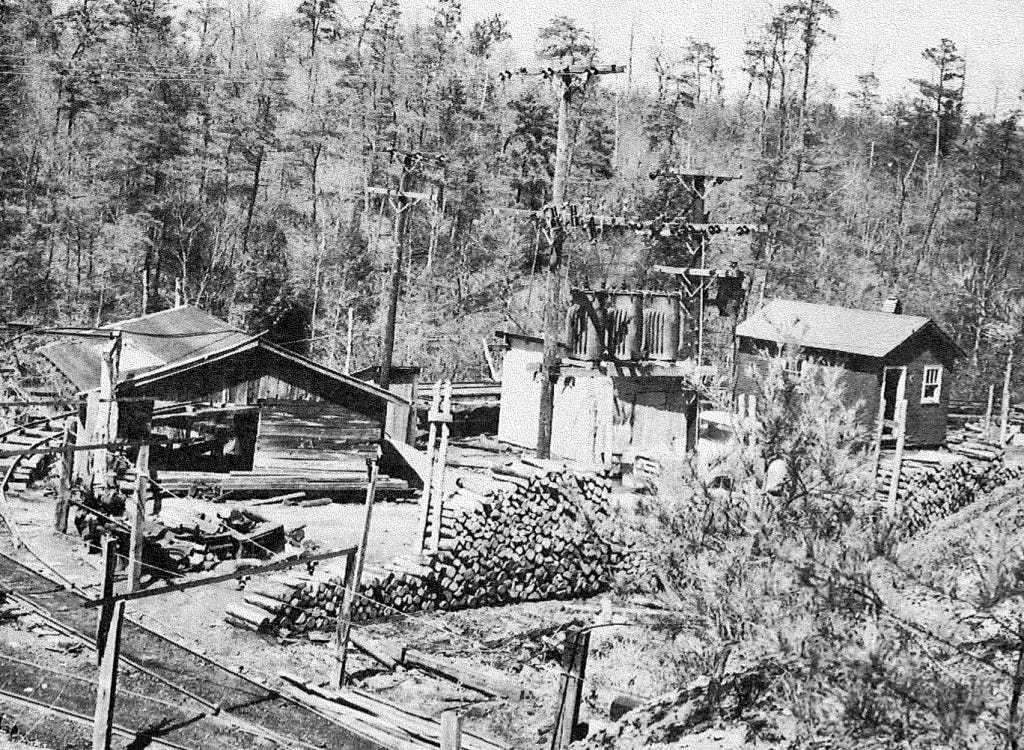Phillips-West Mine explosion claimed the lives of nine
On March 23, 1959, all but one of 10 men who worked at the Phillips-West Mine at Brimstone were killed in an explosion
You’re reading “Echoes in Time,” a weekly newsletter by the Independent Herald that focuses on stories of years gone by in order to paint a portrait of Scott County and its people. “Echoes in Time” is one of six weekly newsletters published by the IH. You can adjust your subscription settings to include as many or as few of these newsletters as you want. If you aren’t a subscriber, please consider doing so. It’s free!
Today’s newsletter is sponsored by the Scott County Chamber of Commerce. Since 1954, the Scott County Chamber of Commerce has advocated for a strong community by supporting stronger infrastructure and leadership.
The Phillips-West Mine disaster was the worst in Scott County’s history
The morning of March 23, 1959 started like any other morning at the Phillips-West coal mine at Brimstone. Temperatures were in the 30s, conditions were fair, and it was expected to be a warm afternoon, with temperatures climbing into the 60s. It was a Monday morning, and men were headed back to work in mining operations up and down Brimstone Creek. At the Phillips-West Mine, someone turned on the ventilation fan at 7:40 a.m., and about 30 minutes later, the men who worked inside the mine began to load their supplies onto rail cars and venture inside, not realizing that the worst mining disaster in Scott County’s history was about to occur.
Owned jointly by brothers Oscar West and W.O. “Oz” West of Oneida, and by Burl Phillips and his son, Hubert D. Phillips, of Paint Rock, the Phillips-West Mine produced an average of 50 tons of coal each day. The small crew of 10 men — which included all four of the owners — had produced almost 9,500 tons of coal from the mine the previous year.
At 8:30 a.m. on the morning of March 23, 1959, up the hill and a short distance away from the Phillips-West Mine’s entrance, two kids who lived near the mine’s ventilation fan heard a bang and ran up the hill to the ventilation shaft to see what was going on. They saw dust and smoke billowing out of the opening.
Back down the hill, Oz heard the noise, too, and saw dust coming out of the mine portal. He was the only member of the 10-man crew who hadn’t entered the mine; he was preparing to do so.
Oz first thought that the dust and the racket had been caused by a portion of the roof collapsing inside the mine. But he quickly realized there had been an explosion. He shut off the electric power to the mine and phoned for help from the nearby Laddie Coal & Mining Company, located three miles away.
A disaster waiting to happen
The federal Bureau of Mines knew from tests that coal dust with a volatile ratio of at least 0.12 was explosive — and the higher the volatility ratio, the more explosive the coal dust.
The Bureau of Mines also knew from tests at mines elsewhere in the Glenmary Coal Seam — which all the mines on Brimstone were chipping coal out of — that the volatile ratio of the Glenmary coal was 0.39.
Scott County had never had a mine explosion like the ones that had made news in other parts of Tennessee — none more tragic than the Fraterville disaster in Anderson County — but there had been gas ignitions inside a nearby mine owned by Terry Coal Company on several different occasions: February 1956, Jan. 31, 1958, and Oct. 17, 1958. All of them had been caused by open-flame carbide lamps. Fortunately, there were no explosions and no one was injured.
But, in retrospect, what happened at the Phillips-West Mine seemed to have been just a matter of time.
It wasn’t that protocols weren’t adhered to, according to the investigations that followed. The Phillips-West Mine wasn’t classified as a gaseous mine by the Bureau of Mines — though inspectors recommended that it be reclassified after the explosion occurred. Federal inspectors had checked the mine no fewer than 11 times, and the presence of methane gas was never measured at greater than 0.05% during those inspections. At any coal mine, methane gasses tend to accumulate in the subterranean caverns, and explosions of those gasses are what had claimed the lives of hundreds of miners in Tennessee prior to 1959 — including the nearly 200 men who were killed at Fraterville. But ventilation fans were intended to disperse those gasses. They were powered up before the first men entered the mine in the morning, and left on until the last men had exited the mine in the afternoon. At the Phillips-West Mine, the fan had been powered on at 7:30 a.m., more than half an hour before the men entered that morning. The last federal inspection of the mine had found the fan to be circulating more than 6,000 cubic feet of air per minute through the mine — meeting the minimum required by federal regulations.
For whatever reason, though, methane had accumulated inside the mine over the weekend that hadn’t been dispersed by the fan when it was powered on at 7:30 a.m. that morning. And with the methane mixing with oxygen-rich air, the only thing missing was a spark.
Investigators never determined what provided the spark that caused the explosion. The blast originated at the mine locomotive, leading them to believe that an electric ark or spark from the trolley wheel might have caused the explosion. But one of the investigators found a partially-consumed cigarette that was still wet on one end, and a nearby burned match, leading him to suspect that smoking might have been the cause.
Either way, the explosion ripped through the mine shaft, the cross-cuts and the open caverns where coal had been mined. Unlike the deadly explosion that would occur at the nearby Kline mine six years later, the Phillips-West blast didn’t collapse the timbers or cause significant property damage. But the heat from the explosion was too much for anyone inside the mine to overcome.
Recovery efforts
Miners from nearby mines raced to the Phillips-West Mine as news of the explosion spread. Audie Acres, the foreman at the Kline mine two miles away, was one of the first on scene. He was followed quickly by George Lewis and Jack King, the general manager and electrician of the Laddie Coal & Mining Company three miles away. Together, the three men entered the mine and began searching — and hoping — for survivors.
L.E. Gazay, superintendent of the Scott Coal Company, notified the Jellico office of the Bureau of Mines of the explosion at 9:10 a.m. The office supervisor, Eric Brown, immediately headed out for Brimstone in a rescue truck. When they arrived on scene, one body had already been removed from the mine, and volunteers were in the process of removing three more. Two more miners had been located. Three were still unaccounted for.
Oscar West, the mine’s foreman, was the first to be located and carried out of the mine. He had not made it to his work station when the blast occurred. Investigators said one of the men was positioned as if he was running towards the mine entrance. Most of the men were shielding their faces with their hands when they died.
Remembering the victims
March 23, 1959 was a day not soon forgotten in Scott County, especially in the Paint Rock community. Almost everyone inside the mine that day was family in some form or fashion. With the exception of Oscar and Oz, who lived in Oneida, all of them lived in the Paint Rock area.
Oscar West, age 45, and Oz West were the sons of Alfred West and Nancy Lucinda Phillips. Oscar had married Alta Allen Gibson in 1934, and he had four children: Nancy, James Oscar, William Carl, and Robert. He was buried at Hazel Valley Memorial Cemetery in Oneida.
Burl Phillips, age 53, was the son of General S. Phillips and Alice Cross. He married Julia Mae Yancey in 1929. Their children included Hubert, Irene, Goldie Louise, Segal Roy, Velma Jean, Hubert Dexter, and Arzo. Arzo was the youngest, just 17. He was inside the mine that day along with his father and brother, Hubert. Julia Mae Yancey Phillips lost a father and two sons that day. They were all three buried at Sexton Memorial Cemetery at Paint Rock.
Hubert Phillips, age 29, first married Rosalee Carson and later married Flonnie Fay Blevins. His children included Linda Lou, James Hubert, Robin, and Melissa. Arzo, age 17, was not married.
Elmer Phillips, age 38, was the son of John Marion Phillips and Disie Pike. He married Charlene Pike. They had five children: Geraldine, Billy Gene, Delmer Lee, Elmer Dewayne and Hollis. He was buried at Pike Cemetery in the Tunnel Hill community between Oneida and Paint Rock.
John L. Pike, age 40, was the son of George Melvin Pike and Winnie Jane West. He married Eva Mae Phillips. They had two children, Willis and Janice. His sister was Charlene, Elmer Phillips’ wife. He was also buried at Pike Cemetery at Tunnel Hill.
Edward Chitwood, age 44, was the son of Robert Chitwood and Janie Odum. He married Laura Bell West in 1936. Their children included Gurstle, Gerty, Herstle, Bobby Lee, Milford, Leamon, Donnie Harold, and Johnny Berlin. His wife’s mother was Burl Phillips’ sister. He was buried at Pine Hill Cemetery.
Lemuel Willard Yancey, age 36, and Bernard Yancey, age 34, were the sons of Lemuel Godby Yancey and Ethel Erie Elam. Lemuel married Nesba Lee Sexton and they had four daughters: Wanda Lee, Betty, Violet and Linda. Bernard married Bessie Hughes. They had three children, Bernard Douglas, Jimmy, and Karen Sue. The two brothers share a stone at Sexton Memorial Cemetery.
Oz West, the lone survivor of the mining disaster, died on Oct. 1, 1989, at age 88. He’s buried at Hazel Valley, where his brother is also buried.
Scott County had suffered a terrible tragedy. Unfortunately, it would not be the last time that an explosion ripped through a mine on Brimstone Creek.
Thank you for reading. Our next newsletters will be Threads of Life on Wednesday and The WeekenderThursday evening. Want to update your subscription to add or subtract these newsletters? Do so here. Need to subscribe? Enter your email address below!
◼️ Monday morning: The Daybreaker (news & the week ahead)
◼️ Tuesday: Echoes in Time (stories of our history)
◼️ Wednesday: Threads of Life (obituaries)
◼️ Thursday evening: The Weekender (news & the weekend)
◼️ Friday: Friday Features (beyond the news)
◼️ Sunday: Varsity (a weekly sports recap)





